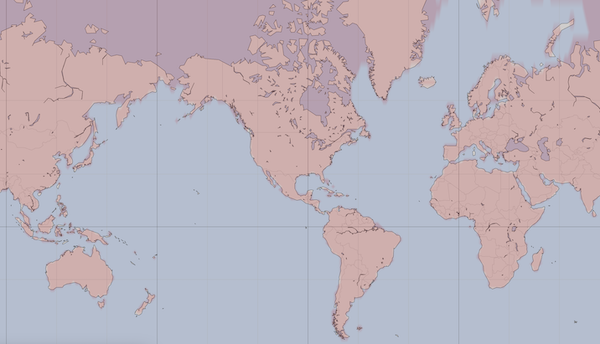
OSCAR - Ocean Currents
| Provider: | Earth & Space Research (esr.org) |
| Model scope: | Global |
| Update frequency: | every 24 hours |
| Resolution: | 0.25°, 15.0nm, 27.8km |
| Model duration: | all data at time: 0 hr |
| Parameters: | current |
| GRIB model date: | Tue Dec 16 00:00:00 2025 UTC |
| Download date: | Fri Dec 19 12:04:10 2025 UTC |
| Download delay: | 84hr 04min |
Note: the Download delay is the amount of time required for the GRIB model to compute its forecast and then for the LuckGrib cluster to download the data and make it available. The LuckGrib delay is generally less than 10 minutes, the remainder of the delay is the model compute time.
Description
The OSCAR model is a global ocean current model that is a little unusual. The OSCAR model does not provide forecasts, rather, it provides historic data and produces an average of the ocean currents over a 24 hour period.
This OSCAR model may be considered similar to ASCAT. What ASCAT does for ocean winds, OSCAR does for ocean currents. OSCAR uses satellite observations to, indirectly, observe and record ocean currents.
The OSCAR data is produced with a two day latency. So, for example, an OSCAR data set may contain data for January 1st (averaged across 00:00 UTC to 23:59 UTC) and will be available on the 4th.
This is from the Oscar web site:
OSCAR surface currents are calculated from satellite datasets using a simplified physical model of an upper ocean turbulent mixed layer. The total velocity is comprised of a geostrophic term, a wind-driven term, and a thermal wind adjustment. …
(and then it becomes more technical…read the original text for more)
Oscar v2.0
As of early June, 2023, this OSCAR model has transitioned to the newer v2.0 version of the data.
The newer, v2 data has a 0.25° resolution and has new data appearing every day, with a two day latency.
The older, v1 data had a new data set appearing every 5 days, with a 1/3° resolution.
Validation
There is an interesting web page available at the OSCAR site which discusses the validation of this model when compared to ocean buoy data.
… Most areas have high correlations, with values above 0.9 in many regions …
Note that a correlation of 1.0 indicates a perfect match. Also, a note on the current magnitude:
… Below are scatterplots of the zonal and meridional component comparisons for the entire dataset, also provided on a log scale. The slope of the line indicates the underestimation of the speeds, generally by 50-60%. …
There is also a discussion of areas or conditions which may lead to this model showing inaccurate values. Examples of these are near coastlines, at the equator, in areas of heavy rain (as it interferes with the satellite observations) and so on.
Why use the OSCAR model?
LuckGrib of course also provides ocean current forecast models with the Global RTOFS, the Global Mercator, as well as several regional models. Why would you want to use the OSCAR model, which provides an average over 24 hours rather than one of the forecast models?
When on land, with access to high speed internet, you may want to study all of the ocean current models. Downloading a lot of data while you have access to high speed internet is not a problem.
When you are at sea and downloading data through a slow satellite device, you need to choose how to consume your limited data bandwidth carefully. If you decide that you are able to download 100K bytes in each download window, you may want to use most of that in downloading wind, and possibly sea level pressure. Downloading a large ocean current model may be unnecessary.
As the OSCAR model contains data at only a single time, which represents the 24 hour average, downloading this model may consume only a small allocation of data from your data budget.
Note on reliability of model updates.
The people at NOAA and NASA have different categories they assign to the data they produce. Operational data is high priority and a great effort is made to ensure that operational data is delivered on time, day after day. Non-operational data is delivered on a best effort basis. With non-operational data, there may be times when the data is not updated, sometimes for several days, or more, at a time.
The OSCAR data is considered non-operational. LuckGrib’s servers are frequently testing for new data availability, and as it becomes available it is processed and made available to you. If you experience a delay in this model updating, please be patient. As the source data is considered non-operational, these delays are to be expected from time to time.